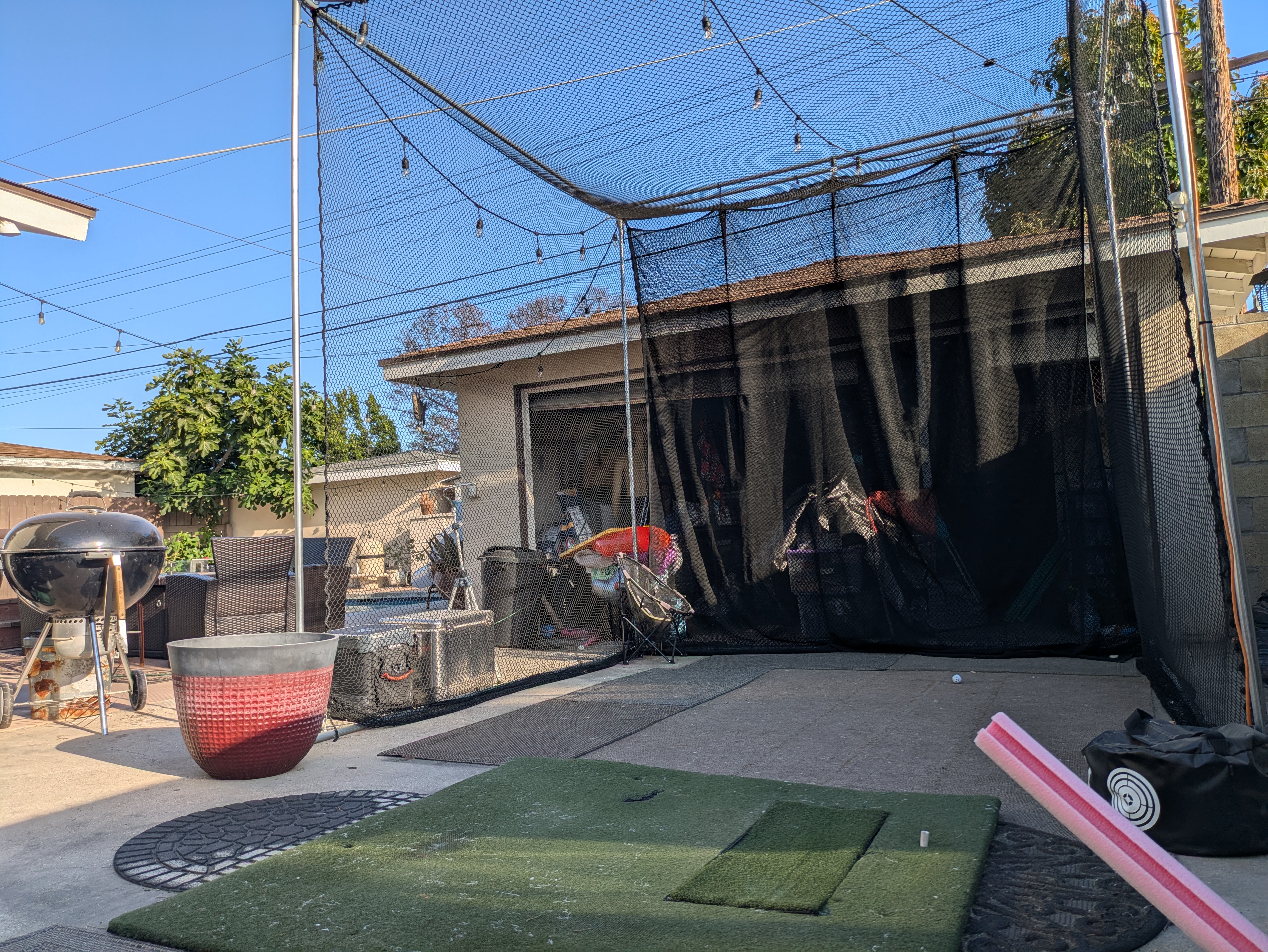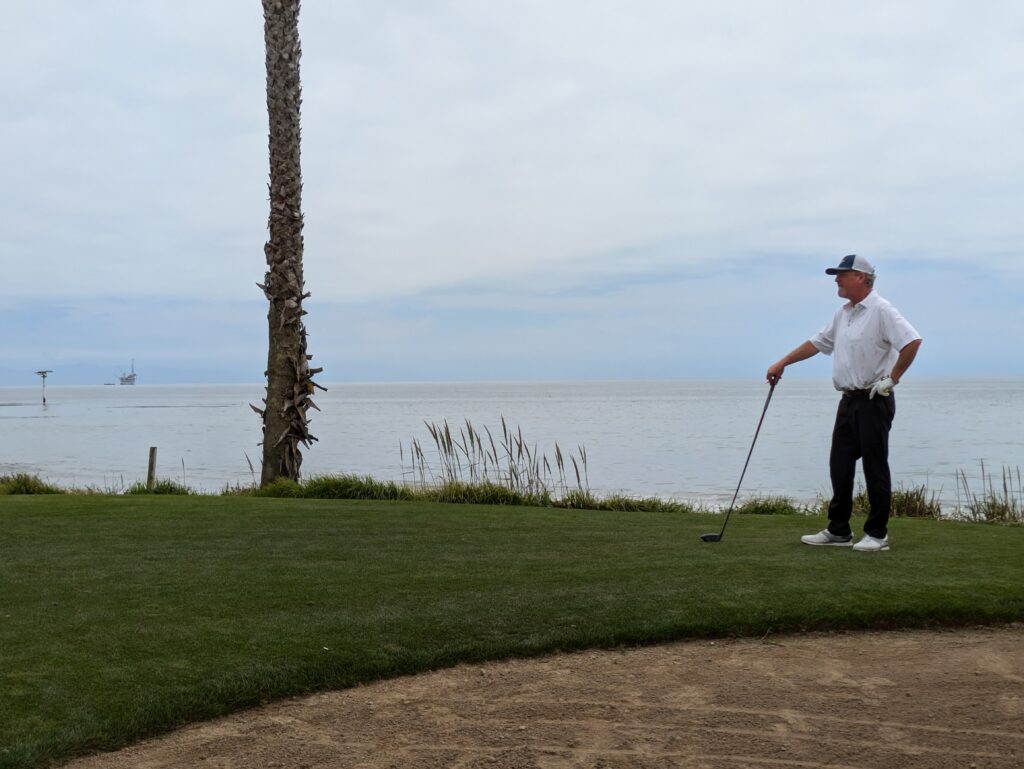Setting Up a Cost-Effective Golf Practice Area at Home

Welcome to another engaging episode of the Holy Duffer Podcast! Today, we’re diving deep into the practicalities and benefits of creating a backyard golf practice area. Hosts Mark and Strolan lay out the essentials for setting up various budget-friendly golf simulators, mats, and nets, including their personal setups, costing from $1,400 to $3,000. Their discussion also highlights useful tech solutions and the importance of tracking metrics to improve your golf game.
Why Build a Backyard Golf Practice Area?
Mark and Strolan kick things off by discussing the fundamental reasons for having a practice area at home. According to Mark, having a space where you can spend even 10-15 minutes practicing daily can significantly enhance your golf skills. He emphasizes that practicing consistently at home with the right setup can provide more value than an hour-long session at the range once a week.
Key Benefits:
– Convenience: Practicing at home provides the flexibility to practice whenever you have a few spare moments.
– Cost-Effectiveness: While initial setup may come with a price, ongoing savings on range fees and travel make it worth the investment.
– Immediate Feedback: With the right tools, you can get immediate feedback on your swing, ball speed, and other crucial metrics.
Basic Components of a Backyard Setup
1. Mat and Net:
For those just starting, a basic setup includes a golf mat and a net. Strolan mentions he bought a $50 used range mat and a $165 holy grail hitting insert to mimic real turf conditions. This allows you to replicate the feel of a real course in your backyard.
2. Launch Monitor:
A crucial element to up your game is a launch monitor. Mark emphasizes that devices like Skytrak or the MLM 2 Pro provide valuable swing data, ball speed, and distance metrics. Even a basic radar monitor like the Swing Caddy, which tracks club speed, ball speed, and estimated carry, can give helpful insights.
Setting Up on Different Budgets
Strolan’s Setup ($1,400):
–Cimarron Masters Golf Net 10 x 10 x 10: A robust net that can handle all kinds of mishits. This system allows Strolan to practice without worrying about damaging the surrounding property, or himself!
– Holy Grail Hitting Strip: Adds realism to practice sessions.
– Rapsodo MLM2 Pro: Provides essential data like swing speed and carry distance, helping track improvement over time.

**Mark’s Setup ($3,000)**:
– **Customized Structure**: Utilizing aluminum tubing covered with a tarp, Mark’s structure is designed to maximize functionality within limited space.
– **Skytrack+ Launch Monitor**: An accurate and space-efficient solution that doesn’t require marked balls, making it convenient and user-friendly.
– **Additional Netting**: To prevent incidents and ensure safety.
The Importance of Technology in Improvement
Both hosts place strong emphasis on the role of technology in improving your golf skills. Launch monitors like Skytrak and MLM 2 Pro offer extensive data, helping you understand and analyze every aspect of your game. These tools allow for:
– Real-Time Feedback: Immediate analysis of each shot helps in making quick adjustments.
– Simulation of Real Courses: Play on simulated versions of famous courses for a varied practice routine.
– Metrics Tracking: Keep track of your club speed, ball speed, carry distance, and other vital statistics.
Mark shares his experience of leveraging a Skytrak monitor to enhance his game by focusing on out-of-position shots and shaping shots effectively. He underlines the benefit of these tech solutions, which give detailed insights that traditional range training often misses.
Avoiding Indoor Swing Syndrome
Practicing indoors or in a confined space can sometimes lead to “indoor swing syndrome,” where golfers alter their swings due to constrained space. Strolan and Mark underline this issue while discussing the need for proper setup to allow free swings without fear. Both hosts emphasize the necessity of a well-constructed enclosure to practice without any mental hindrance effectively.
Conclusion
Establishing a backyard golf setup can be one of the best investments for any golf enthusiast. Regardless of your budget, the initial outlay can lead to long-term improvements and enjoyment. From basic mats and nets to sophisticated launch monitors, technology has made it easier than ever to bring the golf course home. So, grab your gear, set up your backyard practice area, and watch your game improve!
Until next time, Mark, Strolan, and the Holy Duffer Podcast team will see you on the green!




